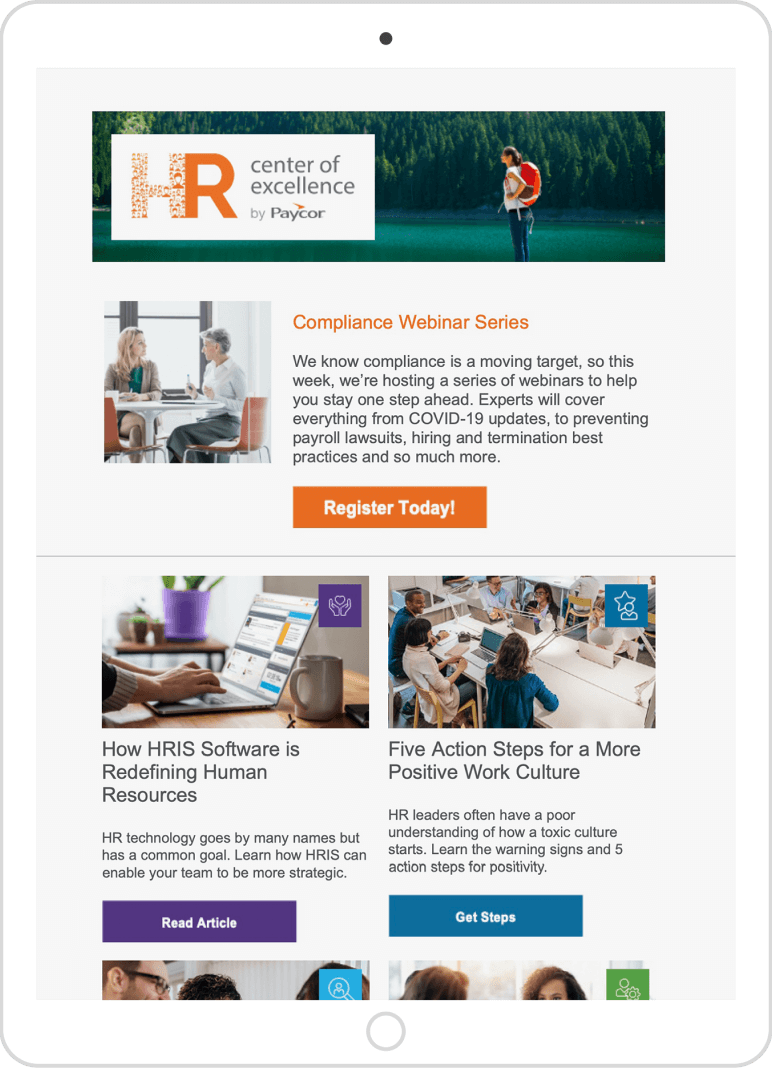Employee benefits administration is the process of creating, managing, and updating an organization’s employee benefits program.
Benefits administration typically falls to a company’s Human Resources department. Depending on your company’s industry, size, location, and budget, you could offer some combination of:
- Health insurance
- Retirement accounts
- Student loan repayments
- Stock options
- Financial education
- Parental leave
- Vacations
- Paid time off
- And more!
A benefits administrator should be able to answer employees’ questions about the company’s benefits packages. They’ll communicate directly with service providers, like health insurance companies and similar.

Why Benefits Administration Matters
A strong benefits strategy is very important for the long-term success of your business. For one thing, many companies are required by law to offer certain benefits to eligible employees. These regulations vary from one U.S. state to another. When you’re deciding which benefits to offer, start by looking up which laws apply to your location.
Offering benefits isn’t more than a way to avoid penalties. It’s also a valuable tool for recruiting, engagement, and retention. In fact, 80% of employees would prefer better benefits to a pay increase (Glassdoor). By streamlining benefits administration, you can attract top talent and build trust with your employees.
Best of all, the right benefits can improve your team’s quality of life. When your employees have access to the resources they need, absenteeism decreases (LinkedIn). So does presenteeism – the habit of coming into work even when you’re so sick or distracted that you can’t get anything done.
When you do it effectively, benefits administration creates a supportive work environment where employees feel valued. In the long term, that has a positive impact on your team, your company culture, and your bottom line.

Common Benefits Challenges
HR leaders face several common challenges when it comes to benefits administration. Compliance is at the top of the list. The laws that govern employee benefits change every year, and staying up to date on new regulations can feel like a full-time job. This task is absolutely essential if you want to avoid fines and possibly even legal consequences.
Benefits can also be a huge administrative burden. Without proper systems in place, it’s easy to lose track of state and federal deadlines, reporting requirements, and similar. You’ll also need to stay on top of any requirements that come from companies you contract with, like insurance carriers and banks.
Need help creating a benefits program that drives retention? Get the tips here: 5 Steps to a Highly Effective Employee Benefits Strategy
Small businesses may have to deal with additional issues. As your company grows, scalability becomes a major concern. For example, you may need to get group health insurance for more and more people. You might also find that certain perks are a necessary way to attract top talent.
In the midst of these details, it’s easy to forget that above all, benefits packages should make your employees’ lives easier. If your benefits strategy empowers your team, it’s achieving that big-picture goal. If it just causes stress and confusion, you might need to reassess your approach.

Best Practices for Benefits Administration
To make sure you’re centering your workers, start by evaluating their unique needs. Then, prioritize benefits that would appeal to them. For instance, if you mostly employ college graduates, consider offering a student loan repayment program. If most of your employees are parents, flexible scheduling could be a big draw. Look for creative ways to support your team – and don’t waste time offering benefits they don’t want or need.
You can also track the latest trends in benefits administration to make sure you stay competitive in your industry. This helps leaders improve recruiting processes and boost retention rates. Some of today’s hottest trends are:
- Remote work: The pandemic accelerated the trend toward remote work. When you set up a virtual work environment, you may need create a budget to outfit your teams’ home offices. If you hire people who live in other states or abroad, you’ll need to carefully review the legal implications.
- Flexible scheduling: In any setting – but especially WFH companies – workers have come to expect more flexibility. This gives your team more control over their work/life balance and can vastly improve their mental health (FlexJobs).
- Mental health support: Mental health support is a top priority for an overwhelming majority of American companies. An impressive 94% of large businesses have improved their mental health benefits in the past three years (U.S. Chamber of Commerce). These benefits can include insurance coverage, flexible scheduling around therapy sessions, membership in an online counseling program, and more.

Choosing the Right Tools for Benefits Administration
Technology plays a major role in benefits administration. The right tools empower HR leaders to work more efficiently, leaving you with time and energy to focus on strategic decisions instead of getting lost in the details.
HR software can also cut down on human error. That might be as simple as double-checking your math – but it also helps with complex problems. For example, some tech tools keep track of changing laws in different U.S. states. This is especially important for companies with remote workers.
How Paycor Helps
Paycor’s suite of HR technology can streamline every aspect of employee benefits management. Our user-friendly interface allows your team to compare different benefits packages, so they can easily choose the right one for themselves and their families. It also removes tedious admin, giving HR leaders more time for other tasks. Automated workflows streamline the enrollment process, so you can focus on what matters most: supporting your people.











